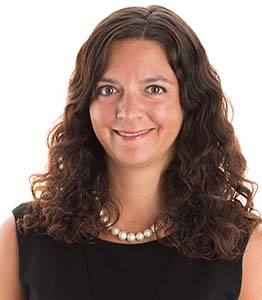 We’re proud of the intelligent, passionate, and hardworking people that make up the Bright Power team. Each month, you’ll get a chance to meet one of them, understand how they contribute to the organization, and what makes them excited to come to work every day.
We’re proud of the intelligent, passionate, and hardworking people that make up the Bright Power team. Each month, you’ll get a chance to meet one of them, understand how they contribute to the organization, and what makes them excited to come to work every day.
Meet Jessica Esposito, Vice President, National.
What are some of the things you like most about working at Bright Power?
I really enjoy getting to be involved in so many facets of sustainability with the clients I work with. Over the last five years, I’ve gotten to work with national affordable housing owners to develop an overall portfolio strategy, ranging from helping make the case for incorporating Passive House design principles on a new construction development in NYC, to electrifying domestic hot water systems in a hundred-year-old building in downtown San Francisco. I like that a big part of my role is building long-term relationships with the owners and developers we work with, both creating, executing, and tracking the progress of a sustainability strategy that encompasses buildings in all different phases of their life cycles. Plus, as of result of getting involved in so many different types of projects, I am surrounded by colleagues with really diverse sets of expertise, and get to learn something new pretty much every day.

What’s something people might not know about you?
I did my yoga teacher training in 2012 during a summer while I was in grad school. I haven’t had time to teach classes since then, but it went a long way in strengthening my own practice, and subjecting my family and friends to extra instruction and adjustments when we practice together. When quarantine started last March 2020, I started a virtual 30-day yoga challenge with an old college friend, which then turned into a 365-day challenge, and at this point, we’re still going strong, at 490 days.
I also grew up playing music, and when I moved to New York fifteen years ago, I joined a band with my dad and some of his friends. When I joined Bright Power, I started singing with Jon Braman (our Executive Vice President of Strategic Initiatives) in his band—I hope we can revive that monthly gig soon!
Tell us about a project or accomplishment for which you’re proud.
One of the first things I tackled when I started at Bright Power took several years to develop. Together with Affordable Community Energy Services Company (ACE) and Mercy Housing, we formed an innovative paid-from-savings financing approach to implement retrofits almost fifty properties across Mercy Housing’s portfolio, which we are now tracking as part of an ongoing ten-year OM&V service (Operations & Maintenance + Measurement & Verification). It was challenging and exciting to get off the ground and took the brainpower and motivation of a lot of really smart people at all three organizations. One of those people is Caitlin Rood (Mercy Housing’s former National Environmental Sustainability Director), who I’m lucky enough to get to work with even more in her new role as a Senior Account Manager at Bright Power.
I would also tout the success of two projects developed and owned by Omni New York LLC: Park Avenue Green and Archer Green. At Archer Green, we are finishing up the installation of a Resilient Power Hub, an integrated onsite generation and resilient power system that includes a solar PV array, a cogeneration plant, and a lithium-ion battery storage system.
Bright Power was part of the design team with Omni New York at Park Avenue Green, an affordable housing building in the Bronx, starting back in 2015 as the Passive House consultant. After the building successfully achieved PHIUS+ certification and went into operation, I worked with Omni to apply for a grant to monitor the performance of the building over time. Omni New York received a $250,000 award under New York State’s inaugural Buildings of Excellence Competition, which is administered by The New York State Energy Research and Development Authority (NYSERDA) to implement Bright Power’s MoBIUSⓇ real-time energy management service at Park Avenue Green. They also are implementing MoBIUS at their neighboring property, Morris Avenue Apartments, which is LEED Gold Certified. The award will also enable Bright Power and Omni New York to compare real data from two different buildings of similar size, tenant population, and location—one Passive House and one not. This analysis will help to reveal the operational differences of Passive House and non-Passive House buildings and quantify the energy savings benefits of Passive House construction.
On a personal professional note, I also am proud to be one of the founding members of the Resilient Forest Bar, a tiki-themed solar+battery-powered bar established with some fellow Bright Power coworkers during our annual company retreat.
What’s the one service offering we have that you think is the most beneficial to clients and why?
I think Bright Power’s unique value to our clients is that we can be a one-stop-shop for creating, executing, and tracking their sustainability strategies. When we are really integrated into the client’s approach to sustainability and energy management, I find we can be most effective in identifying opportunities, bringing them to fruition, and making sure they result in lasting cost, energy, and carbon savings. A big part of that is figuring out where to start, where to focus efforts at any given time, and where to push the envelope. I believe having a centralized account manager goes a long way in connecting the dots of various initiatives a client may be working on across the different parts of their own organization and within the different service teams from Bright Power.
What are some trends that you see in the industry that excite you?
It’s exciting to be a part of the growing trend of electrification emerging in the US, particularly in California and New York. A few years ago, Bright Power was a part of some of the first electric heat pump water heater (HPWH) retrofits at multifamily properties in the country, installed through the Low Income Weatherization Program (LIWP) in California. Organizations like NYSERDA are also working with innovative building owners, including Jonathan Rose Companies and Omni New York, service providers, and manufacturers to learn how to do this at scale through programs like the Empire Buildings Challenge. Figuring out how to implement HPWHs in a retrofit environment can be challenging, but it’s critical to figure out how to decarbonize our existing building stock.